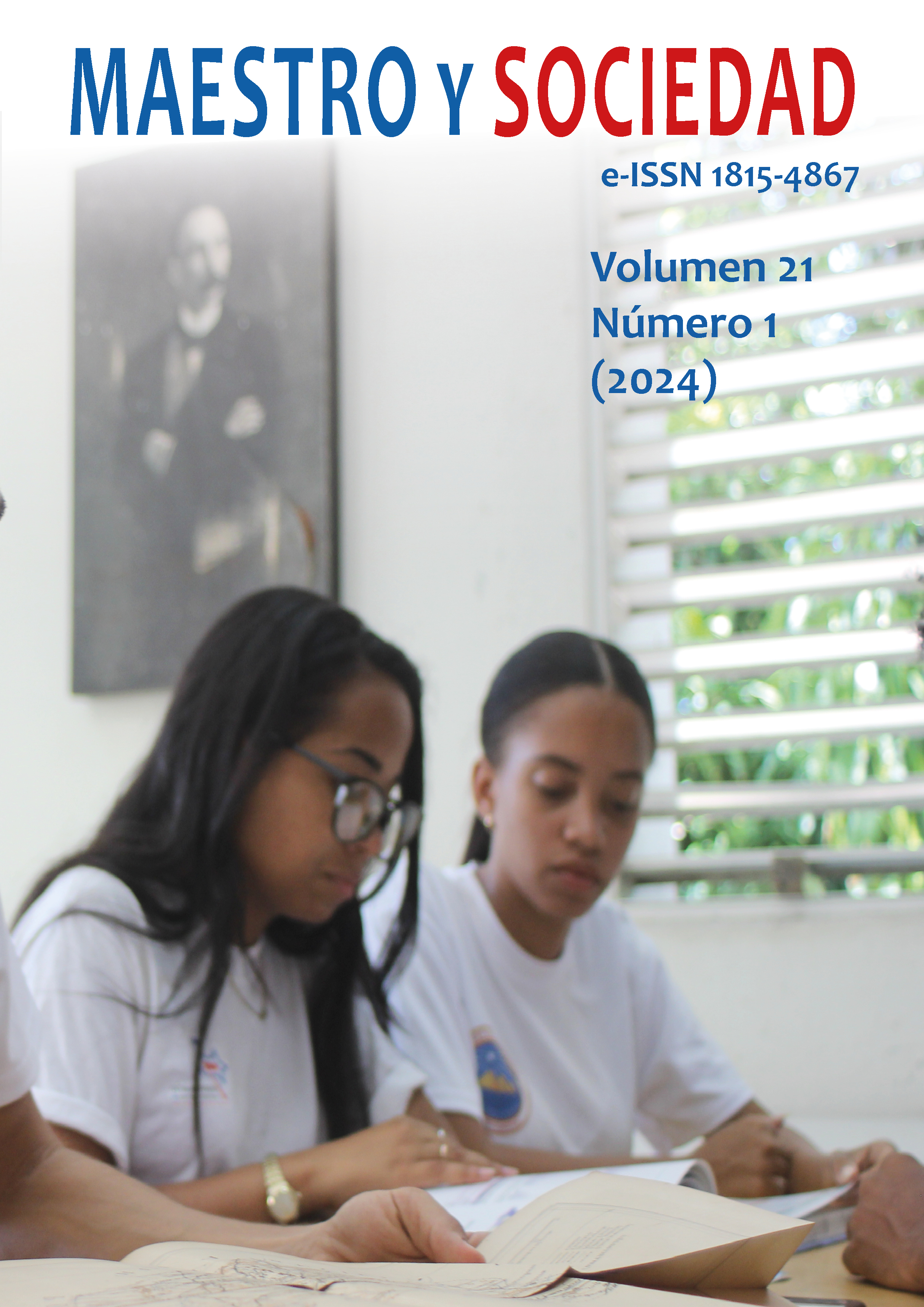Didactic strategy to strengthen the teaching-learning process of addition and subtraction operations in second grade students of the elementary sublevel
Keywords:
strategy, teaching strategy, addition operation, subtraction operationAbstract
Introduction: The research addresses calculation operations in the second grade and its objective is to develop a didactic strategy to strengthen the teaching-learning process of addition and subtraction operations in second grade students of the Elementary sublevel in the “Juan Pío Montúfar” Educational Unit, which delimits the field of action to the teaching-learning process of addition and subtraction operations. Materials and methods: The research is developed from a quantitative approach with a descriptive scope, it is also supported from a strategic point of view in field work through the use, mainly, of techniques such as survey, direct pedagogical observation and documentary review. in addition to theoretical methods. Two pedagogical tests were applied, the first allowed us to verify the identified problem and the second the effectiveness of the didactic strategy. Results: The results obtained in the research show a significant impact of the didactic strategy to strengthen the teaching-learning process of addition and subtraction operations in second grade students in the “Juan Pío Montúfar” Educational Unit. An increase in the academic performance of the students who were intervened with the application of the teaching strategy was observed. Discussion: This corroborates what Gastón Mialaret (1986) warned that learning addition and subtraction is not something spontaneous but a process that unfolds in different stages. Conclusions: The teaching strategy represents an important contribution to the field of educational research in general and mathematics education in particular
References
Alsina, Á. (2020). La Matemática y su didáctica en la formación de maestros de Educación Infantil en España: crónica de una ausencia anunciada. La Gaceta de la Real Sociedad Matemática Española, 23(2), 373-387. https://www.researchgate.net/profile/Alsina-Angel/publication/342000363.
Ausubel, D. P. (2002). Adquisición y retención del conocimiento. Una perspectiva cognitiva. Ed. Paidós.
Cazares, N., & Romero, M. (2015). Actividades Lúdicas en la calidad de aprendizaje de Matemáticas. (s.e.).
Constitución República del Ecuador. (2018). https://lc.cx/uUH6dY
Díaz, F. y Hernández, G. (1999). Estrategias Docentes para un Aprendizaje Significativo: Una interpretación constructivista. McGRAWHILL INTERAMERICANA, S.A.
Flores, M., (2002). El conocimiento matemático en problemas de adición y sustracción. Un estudio sobre las relaciones entre conceptos, esquemas y representación. [Tesis de doctorado. Universidad Autónoma de Aguascalientes].
García, H. Y. (2018). Proyecto De Aula Para La Enseñanza De Las Operaciones Suma Y Resta A Estudiantes De Primer Grado De Primaria”. Universidad Nacional de Colombia.
García, N., (2001). Desarrollo de las operaciones de sumar y restar: comprensión de los problemas Verbales. . http://webs.ucm.es/BUCM/tesis/psi/ucm-t25308.pdf
García, O., (2014). Solución de problemas matemáticos de suma y resta en alumnos con dificultades para aprender. Atenas, 2(26), 38-53.
Gastón, M. (1986). Etapas en el Aprendizaje de las Operaciones. Aprendizaje Visor.
Gastón, M. (1988). Las matemáticas, cómo se aprende, cómo se enseñan. Aprendizaje Visor.
Godinov, J. D. (2003). Matemática y su didáctica para maestros. Departamento de Didáctica de la Matemática.
González, R., Valle, A., Núñez, J.C., González, J.A. (1996). Una aproximación teórica al concepto de. metas académicas y su relación con la motivación escolar. Psicothema, 8, 45-61.
Guárate, A. Y. y Cruz Hernández, A. (2018). Qué son las estrategias de enseñanza. Recuperado de: https://lc.cx/Ir0T14.
INNEVAL. (2023). Informe Nacional de resultados Ser Estudiante. Sub Nivel Básica Elemental año lectivo 2021-2022. https://lc.cx/rkHtTc
Jiménez, A. y Robles,J.,(2016). Las estrategias didácticas y su papel en el desarrollo del proceso de enseñanza aprendizaje. Revista EDUCATECONCIENCIA. 9(10). https://lc.cx/_A2QJK.
Ley Orgánica Reformatoria a la Ley Orgánica de Educación Intercultural. https://lc.cx/J345Hh
Márquez Rodríguez, A. (2000). Un enfoque integrador para el desarrollo de la excelencia y la creatividad. GIDEC.
MinEduc. (2022). Plan Estratégico Instituciona 2021-2025. https://educacion.gob.ec/wp-content/uploads/downloads/2023/02/PLAN-ESTRATEGICO-INSTITUCIONAL_2021-2025.pdf
MinEduc. (2022). Plan Nacional de Formación permanente. https://lc.cx/uUH6dY
Oliveros, E. (2022). Metodología de la enseñanza de la matemática. Ecuador.
Primicias.ec. (2024). Estudiantes ecuatorianos apenas 'pellizcan' los conceptos mínimos de su nivel formativo. https://www.primicias.ec/noticias/sociedad/estudiantes-calificaciones-materias-examen-educacion/
Velasco, T. (2011). Acercándonos desde la teoría de la suma y la resta a la educación infantil. Revista PEDAGOGÍA MAGNA, (11).
Vigotsky, S. (1989). El proceso de formación de la Psicología Marxista. (s.e.).
Vila, A., y Callejo, M. L. (2004). Matemáticas para aprender a pensar. El papel de las creencias en la resolución de problemas. Narcea.
Walberg, H. y Paik, S. (2006). Prácticas eficaces. Centro Nacional de Evaluación para la Educación Superior, AC.
Published
How to Cite
Issue
Section
License
Copyright (c) 2024 Shirley Mireya Cárdenas Reyes, María Magdalena Loor Zambrano, Katia Lisset Fernández Rodríguez , Wilber Ortiz Aguilar

This work is licensed under a Creative Commons Attribution-NonCommercial-NoDerivatives 4.0 International License.
This journal provides immediate open access to its content, based on the principle that offering the public free access to research helps a greater global exchange of knowledge. Each author is responsible for the content of each of their articles.



























 Universidad de Oriente
Universidad de Oriente 